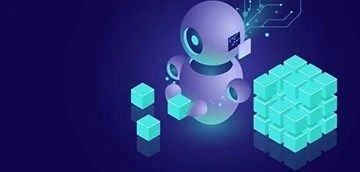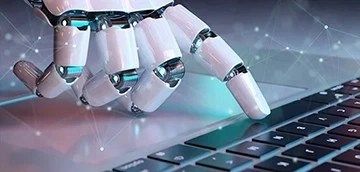From RPA to Hyperautomation: Strategies and Tools for the Best Business Outcomes
What is Robotic Process Automation (RPA)
The definition of robotic process automation (RPA) is the use of computer software ‘robots’ to handle repetitive, rule-based digital tasks. These robots interact with applications and information sources in much the same way as human workers do. Putting RPA to work on mundane tasks can not only help an organization achieve cost-savings through efficiency but also free employees to focus their attention on more valuable business priorities.Automate practically anything with RPA
RPA software can handle tasks such as moving from one application to another, inputting data into multiple fields, reentering data, or copying and pasting — nearly any task that is largely driven by rules and schedules. The robot is a software worker that can do jobs such as retrieving customer profiles, supporting and ordering information from multiple enterprise systems and applications.As business process automation takes over the repetitive, routine manual work, human error is eliminated, and costly mistakes no longer happen in business operations. Consumers today expect more efficient and personalized services than ever before, and only businesses that use digital capabilities like RPA to keep up with more sophisticated and growing customer demands will remain relevant in the long run.Implement RPA to optimize business processes
An RPA workforce is precise, accurate and immune to boredom. It can also be scaled more easily than your human workforce. RPA can perform just about any rule-based work and can do so through interaction with any software application or website. It’s a robotic connection to the human world of the computer user interface. If a human can do it, a robot can do it in virtually the same way.What Can Robotic Process Automation Do?
RPA can handle tasks such as moving from one application to another, inputting data into multiple fields, reentering data, or copying and pasting — nearly any task that is largely driven by rules and schedules. The robot is a software worker that can do jobs such as retrieving customer profiles, support and order information from multiple enterprise systems and applications.Keep reading on "What Can Robotic Process Automation Do?"

What’s the Difference Between AI and RPA?
RPA and AI work hand in hand to bring more human intelligence to process automations. The integration of AI technologies with an RPA platform, enables the robotic workforce with more human-like capabilities, for example:- Reading, by utilizing OCR (Optical Character recognition) and text analytics.
- Listening, by utilizing NLP (Natural Language Processing) and Voice Analytics.
- Communicating by using chatbots, which may be both text and voice-enabled.
Keep reading on "What is the difference between AI and RPA?"

How Does RPA Work?
RPA works by accessing information from your existing computer systems. There are numerous ways that RPA tools can integrate with your applications. One option is through connections to databases and enterprise web services on the backend. Another is through front-end or desktop connections that take multiple forms.How does RPA work with your existing systems?
Let’s take a look at the Task Automation Spectrum (see diagram below) to better understand how different robots can support a wide-ranging spectrum of tasks.

RPA bots: what are they and what can they do?
Not to be confused with the sort of robot you might see on the floor of a factory, a bot in robotic process automation (RPA) is an intelligent automation software. Such a bot can execute a range of tasks within a process by connecting to various applications e.g. ERP or CRM applications. Read our blog post to find out what RPA bots can do for you.Keep reading on "RPA bots: what are they and what can they do?"

What is RPA process recording?
The process recorder function in robotic process automation (RPA) is one way to speed up capturing the steps in a process and then automating them. It can be a useful tool for a range of simple automations. Nonetheless, it has its drawbacks. Read our new blog post to learn more about the pros and cons of RPA process recording.Keep reading on "RPA process recording"

What is RPA OCR?
Advanced optical character recognition (OCR) is a cognitive technology that mimics the human ability to read. Used to extract text from images and documents via mechanical or electronic means, OCR enables organizations to automate a greater volume of their operational business processes, especially those that still depend heavily on paperwork such as customer-completed forms. Our new blog post explores why OCR within an RPA context is an essential feature for organizations in the midst of digital transformation programs.Keep reading on "RPA OCR – elevating process automation"

What are the benefits of Robotic Process Automation?
The benefits of RPA are wide-ranging and far-reaching. You can put software robots to work to achieve significant and measurable improvements in areas of your business that range from customer satisfaction and employee engagement through to process speed, accuracy and cost efficiency.By allocating more structured and repetitive tasks to robots, human employees are freed from the cumbersome and monotonous nature of manually processing very simple tasks. With RPA implementations, human employees are freed up to attend to higher value activities which may require more strategic and creative skills. This has also proven to be a more fulfilling and motivating approach for employees.To gain a more in-depth understanding of how robot-human collaboration can contribute towards employee well-being and improve workplace dynamics and existing systems, visit a host of informative videos and white papers which we co-created with Prof. Dan Ariely (globally recognized author and behavioral economics expert).In addition to improving employee engagement, motivation and productivity, here are some of the proven results that we have seen in the market.Read on to find out how RPA can benefit your business.Keep reading on "The Benefits of Robotic Process Automation"

What is Intelligent Process Automation (IPA)?
Intelligent process automation, or IPA, brings together robotic process automation (RPA) and artificial intelligence (AI) technologies to take the automation of business processes to the next level. Combining these technologies enables the automation of more complex processes, unlocking even more business value for enterprises.Keep reading on "What is Intelligent Process Automation (IPA)?"

The Robotic Process Automation Life Cycle
To maximize your investment in RPA, it is essential to understand all the phases of the RPA life cycle and how best to optimize each phase. The best RPA tools are not just tools for building automation capabilities, but for identifying and planning before the build as well as post-deployment monitoring.Organizations that have scaled and expanded their RPA deployments successfully, started off by selecting the optimal process candidates for automation. Today smart, AI-driven automation tools exist to assist organizations in accurately selecting the best processes to automate. Following this first essential step in the RPA life cycle, the other steps remain critical to lay a solid foundation for continuous improvement and optimization.A successful RPA project should provide insights after the process has been built, improving your knowledge of additional areas where productivity can be improved, and enabling a continuous process of optimization. Setting up an Automation CoE (Center of Excellence) is another crucial step towards maintaining good governance and effectively growing your automation footprint.Keep reading on "The Robotic Process Automation Life Cycle"

What is the future of RPA?
Many large organizations have already put robotic process automation (RPA) to work in their businesses, yet there is still so much more potential to use the technology to drive better productivity, efficiency and customer service. As RPA becomes smarter in the future, it will deliver even more benefits to enterprises and their customers and workforces.Decoding the future of robotic process automation (RPA)
RPA adoption is soaring in a world where organizations face continued social distancing needs and growing economic pressure as a result of the pandemic. The technology is enabling organizations across the globe to improve efficiencies, enhance the digital customer experience and drive productivity to keep pace with the demands of the new normal.RPA is all about automating repetitive, rule-based digital tasks, with software robots interacting with applications and information sources in much the same way as human workers do."What is the future of RPA?"

What is Cognitive Robotic Process Automation?
Cognitive RPA is a class of robotic process automation (RPA) tools and solutions that leverage artificial intelligence (AI) technologies such as Optical Character Recognition (OC), Text Analytics, and Machine Learning to enable the automation of more complex processes, which in turn drive greater operational efficiencies. Just as RPA technology relies on robust connectivity to integrate with various enterprise applications, AI tools rely on data and smart algorithms to observe and learn from human behavior and input. The powerful combination of RPA technology and various AI tools enables organizations to automate processes which heavily rely on unstructured data. In addition, operational processes that are less rules bound, can be automated more intelligently (compared to more traditional unattended RPA bots which excel at automating more structured rules-based processes).Check out the below video which explains exactly how an intelligent robotic workforce extracts, analyses and interprets unstructured data at scale, while also learning from human input.
Keep reading on "Cognitive Robotic Process Automation"

Robotic Desktop Automation - Augmenting Human Capabilities
Robotic Desktop Automation (RDA), also known as attended automation, refers to a desktop bot or virtual assistant bot that lives on an employee or end-user’s desktop. Not only does it drive efficiency and productivity, but it also helps to boost employee and increase customer satisfaction.Keep reading on "Robotic Desktop Automation"

Automated Opportunity Discovery with NiCE Automation Finder
One of the biggest questions that enterprises ask themselves when embarking on an automation journey is “where do we start?” According to SSON "Nearly half the automation projects that fail do so because of wrong process choice".Enterprises today have thousands of processes across the various organizational divisions, be it front or back office, HR, Finance etc. Although most of these processes are executed manually, many of them are highly structured, repetitive and routine process that don’t necessarily require human thinking and can be easily automated with software robots. Organizational processes have different attributes to them, and when the enterprise is considering which processes to automate, they need to factor in various parameters when selecting the potential processes for automation. Generally, processes which are very complex, and are executed by a small group of people may not be the best candidates for automation. In addition, other processes which are very error prone (when executed manually) and only executed seasonally, could potentially be good process candidates for automation.So which parameters are obvious to look out for to maximize ROI?This is where the NiCE Automation Finder comes in to the rescue. Automation Finder is the most effective way of identifying process automation opportunities, in a structured, automated way. It discovers and maps the existing processes and then prioritizes them based on a number of parameters, including their frequency, handle time and type of manual actions taken as part of the process. It uses AI-tools to make automation opportunity discovery initiatives easy and cost effective for enterprises to pinpoint optimal process candidates for automation.Keep reading on "NiCE Automation Finder"

RPA Use Cases: Lower Costs, Better Experiences, Real ROI
Organizations going through a digital transformation have more opportunities than ever to further automate their business processes. Let’s consider some proven robotic process automation use cases and the value that they can create for organizations operating in a difficult time.In a challenging time for organizations around the world, enterprises face the need to reconcile the imperative of meeting rising customer expectations with the need to drive down costs. Leading businesses are accelerating their digital transformation and automation programs to manage these conflicting demands on their operations. Robotic process automation (RPA) is one of their most important tools in this environment.RPA enables organizations to automate manual, repetitive tasks across different applications, so that their people can be more productive and have more time to focus on strategic initiatives and the customer experience. From front-office to back-office, from sales to finance to HR to customer service, and from retail to telecoms to financial services, RPA use cases are numerous.Here are just a few examples of how leading companies are already using RPA to improve business performance.Keep reading on "RPA Use Cases: Lower Costs, Better Experiences, Real ROI"

Unlocking RPA ROI through Automated Process Discovery
Discovering the right processes to automate is critical for any enterprise that wishes to unlock the best possible return on investment from robotic process automation. There are many processes ripe for automation in large enterprises – the challenge is to find the best ones. An automated, data-driven solution – such as NiCE’s Automation Finder – is the key to getting it right.Keep reading on "Unlocking RPA ROI through Automated Process Discovery"








